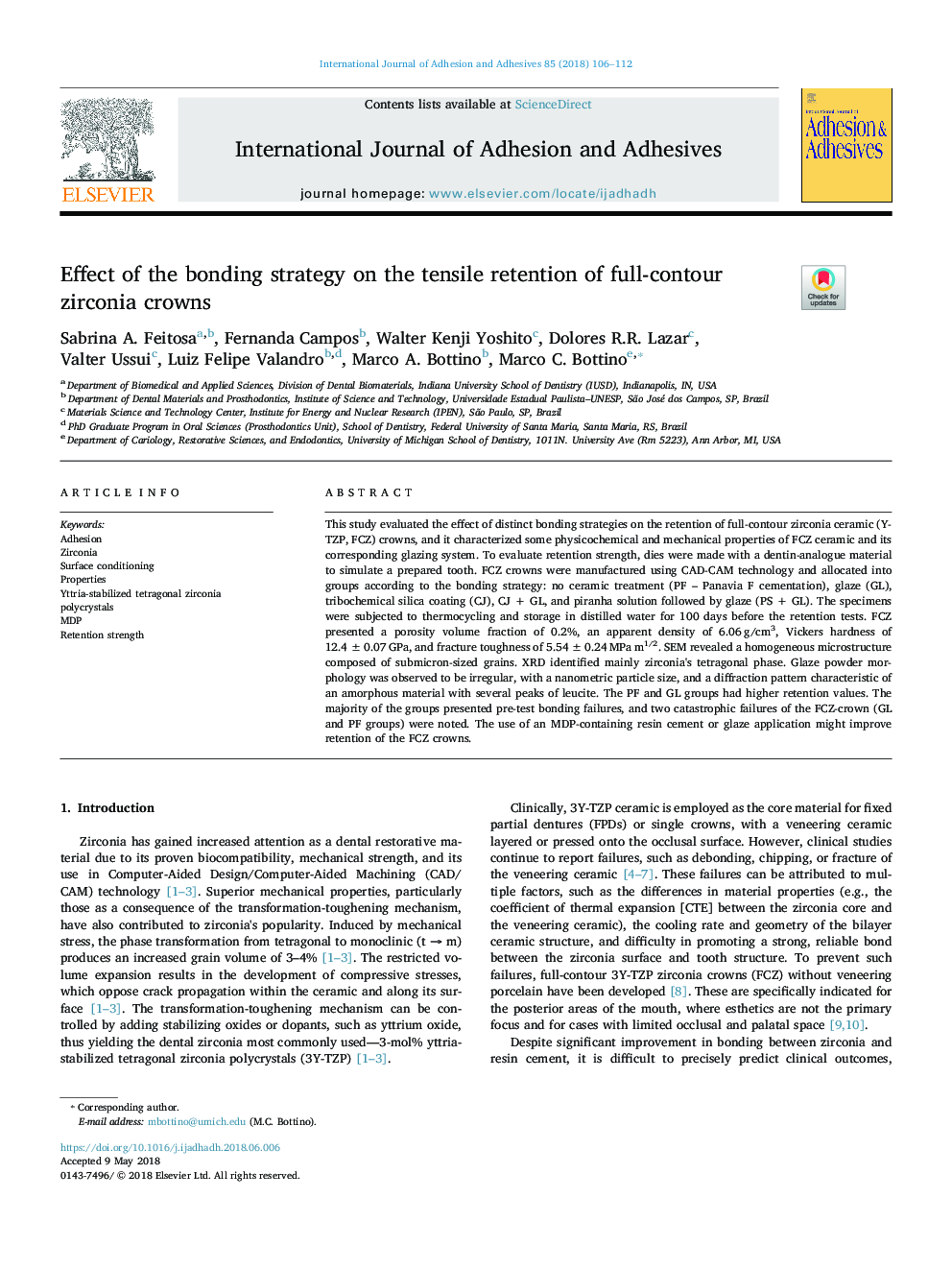| Article ID | Journal | Published Year | Pages | File Type |
|---|---|---|---|---|
| 7170851 | International Journal of Adhesion and Adhesives | 2018 | 7 Pages |
Abstract
This study evaluated the effect of distinct bonding strategies on the retention of full-contour zirconia ceramic (Y-TZP, FCZ) crowns, and it characterized some physicochemical and mechanical properties of FCZ ceramic and its corresponding glazing system. To evaluate retention strength, dies were made with a dentin-analogue material to simulate a prepared tooth. FCZ crowns were manufactured using CAD-CAM technology and allocated into groups according to the bonding strategy: no ceramic treatment (PF - Panavia F cementation), glaze (GL), tribochemical silica coating (CJ), CJ + GL, and piranha solution followed by glaze (PS + GL). The specimens were subjected to thermocycling and storage in distilled water for 100 days before the retention tests. FCZ presented a porosity volume fraction of 0.2%, an apparent density of 6.06â¯g/cm3, Vickers hardness of 12.4 ± 0.07â¯GPa, and fracture toughness of 5.54 ± 0.24â¯MPaâ¯m1/2. SEM revealed a homogeneous microstructure composed of submicron-sized grains. XRD identified mainly zirconia's tetragonal phase. Glaze powder morphology was observed to be irregular, with a nanometric particle size, and a diffraction pattern characteristic of an amorphous material with several peaks of leucite. The PF and GL groups had higher retention values. The majority of the groups presented pre-test bonding failures, and two catastrophic failures of the FCZ-crown (GL and PF groups) were noted. The use of an MDP-containing resin cement or glaze application might improve retention of the FCZ crowns.
Related Topics
Physical Sciences and Engineering
Engineering
Mechanical Engineering
Authors
Sabrina A. Feitosa, Fernanda Campos, Walter Kenji Yoshito, Dolores R.R. Lazar, Valter Ussui, Luiz Felipe Valandro, Marco A. Bottino, Marco C. Bottino,
